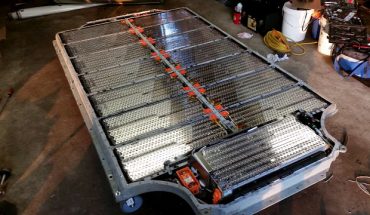
Breaking News
 Grand Theft World Podcast 265 | Patsies & Plot Twists with Guests Greg Carlwood and Jordan Page
Grand Theft World Podcast 265 | Patsies & Plot Twists with Guests Greg Carlwood and Jordan Page
 The Best EVs We Drove In 2025: How We Picked The Winners
The Best EVs We Drove In 2025: How We Picked The Winners
 FULL SPEECH: Tucker on the America First Movement & New "Deplatforming"...
FULL SPEECH: Tucker on the America First Movement & New "Deplatforming"...
 Tucker Carlson on the Somali Invasion and the Self-Loathing Ideology Destroying America
Tucker Carlson on the Somali Invasion and the Self-Loathing Ideology Destroying America
Top Tech News
 This tiny dev board is packed with features for ambitious makers
This tiny dev board is packed with features for ambitious makers
 Scientists Discover Gel to Regrow Tooth Enamel
Scientists Discover Gel to Regrow Tooth Enamel
 Vitamin C and Dandelion Root Killing Cancer Cells -- as Former CDC Director Calls for COVID-19...
Vitamin C and Dandelion Root Killing Cancer Cells -- as Former CDC Director Calls for COVID-19...
 Galactic Brain: US firm plans space-based data centers, power grid to challenge China
Galactic Brain: US firm plans space-based data centers, power grid to challenge China
 A microbial cleanup for glyphosate just earned a patent. Here's why that matters
A microbial cleanup for glyphosate just earned a patent. Here's why that matters
 Japan Breaks Internet Speed Record with 5 Million Times Faster Data Transfer
Japan Breaks Internet Speed Record with 5 Million Times Faster Data Transfer
 Advanced Propulsion Resources Part 1 of 2
Advanced Propulsion Resources Part 1 of 2
 PulsarFusion a forward-thinking UK aerospace company, is pushing the boundaries of space travel...
PulsarFusion a forward-thinking UK aerospace company, is pushing the boundaries of space travel...
 Dinky little laser box throws big-screen entertainment from inches away
Dinky little laser box throws big-screen entertainment from inches away
 'World's first' sodium-ion flashlight shines bright even at -40 ºF
'World's first' sodium-ion flashlight shines bright even at -40 ºF
Finally, Commercialization of Wafers of Carbon Nanotube Transistor Chips

CNFETs are more energy-efficient than silicon field-effect transistors and could be used to build new types of three-dimensional microprocessors.
They found that dry cycling, a method of intermittently drying out the submerged wafer, could dramatically reduce the incubation time — from 48 hours to 150 seconds.
After analyzing the deposition technique used to make the CNFETs, Max Shulaker, an MIT assistant professor of electrical engineering and computer science, and his colleagues made some changes to speed up the fabrication process by more than 1,100 times compared to the conventional method, while also reducing the cost of production. The technique deposited carbon nanotubes edge to edge on the wafers, with 14,400 by 14,400 arrays CFNETs distributed across multiple wafers.
A 3D computer chip with combined logic and memory functions is projected to "beat the performance of a state-of-the-art 2D chip made from silicon by orders of magnitude.
Abstract
Carbon nanotube field-effect transistors (CNFETs) are a promising nanotechnology for the development of energy-efficient computing. Despite rapid progress, CNFETs have only been fabricated in academic or research laboratories. A critical challenge in transferring this technology to commercial manufacturing facilities is developing a suitable method for depositing nanotubes uniformly over industry-standard large-area substrates. Such a deposition method needs to be manufacturable, compatible with today's silicon-based technologies, and provide a path to achieving systems with energy efficiency benefits over silicon. Here, we show that a deposition technique in which the substrate is submerged within a nanotube solution can address these challenges and can allow CNFETs to be fabricated within industrial facilities.



